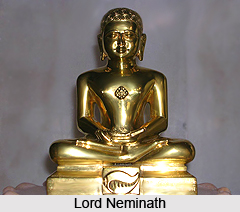 Shri Digambar Jain Atishaya Kshetra Ghogha is situated in ancient city of Ghogha at the bank of Bay of Khambhat in Gujarat State. It is an Atishaya Kshetra i.e. a Place of Miracles. The broken fragments found here suggest that earlier Ghogha was a centre of business and was a prosperous city.
Shri Digambar Jain Atishaya Kshetra Ghogha is situated in ancient city of Ghogha at the bank of Bay of Khambhat in Gujarat State. It is an Atishaya Kshetra i.e. a Place of Miracles. The broken fragments found here suggest that earlier Ghogha was a centre of business and was a prosperous city.
History of Ghogha Jain Teerth
According to history almost 1200 families of Jains resided here and later on this number started decreasing. Many families of Bhavnagar belong to Ghogha. Three ancient Digambar Jain temples are located here. The temples house many artistic ancient idols. One of the idols among them is supposed to be more than 2500 years old. As per the art of sculpture it seems that idol had been installed during 11th - 12th Century. Temples are ancient but it seems that these were reconstructed in 15th - 16th Century because more of the idols here belong to 15th - 16th Century.
Temple of Ghogha Jain Teerth
The temple of Ghogha houses an idol of Lord Neminath. It is black colour idol that has been installed in Chopara Mandir. It is a miraculous idol and is said to fulfil the wishes and praying of its devotees. At night the sound of bells can be heard coming from temples.
Among the three Digambar Jain temples that located in Ghogha, the first one is called as Chopra Mandir. The principal deity of this temple is Lord Chandraprabha, the 8th Jain Tirthankara. The miraculous idol of Lord Neminath is also installed her. The idol is very beautiful and attractive. The second temple is known as Gujarati Mandir. It houses the deity of Bhagwan Rishabh Dev. The idol is black in colour and is 2 feet in height. It is seated in a Padmasana posture. The idol was installed in V.S. 1679. The ancient idol supposed to be more than 2500 years old. In this temple a beautiful metallic Sahastra Koot Chaityalaya is installed. It has 1000 idols carved on it and was installed in V.S. 1611. This is 42 inch in height and 23 inch in width. The temple is managed by Digambar Jain Samaj of Bhavnagar.
Pilgrims can reach the Ghogha Jain Teerth via road. Buses and taxies are available at Bhavnagar for Ghogha. Bhavnagar is connected with all major cities of Gujarat State. The Bhavnagar Station is located nearby.




















